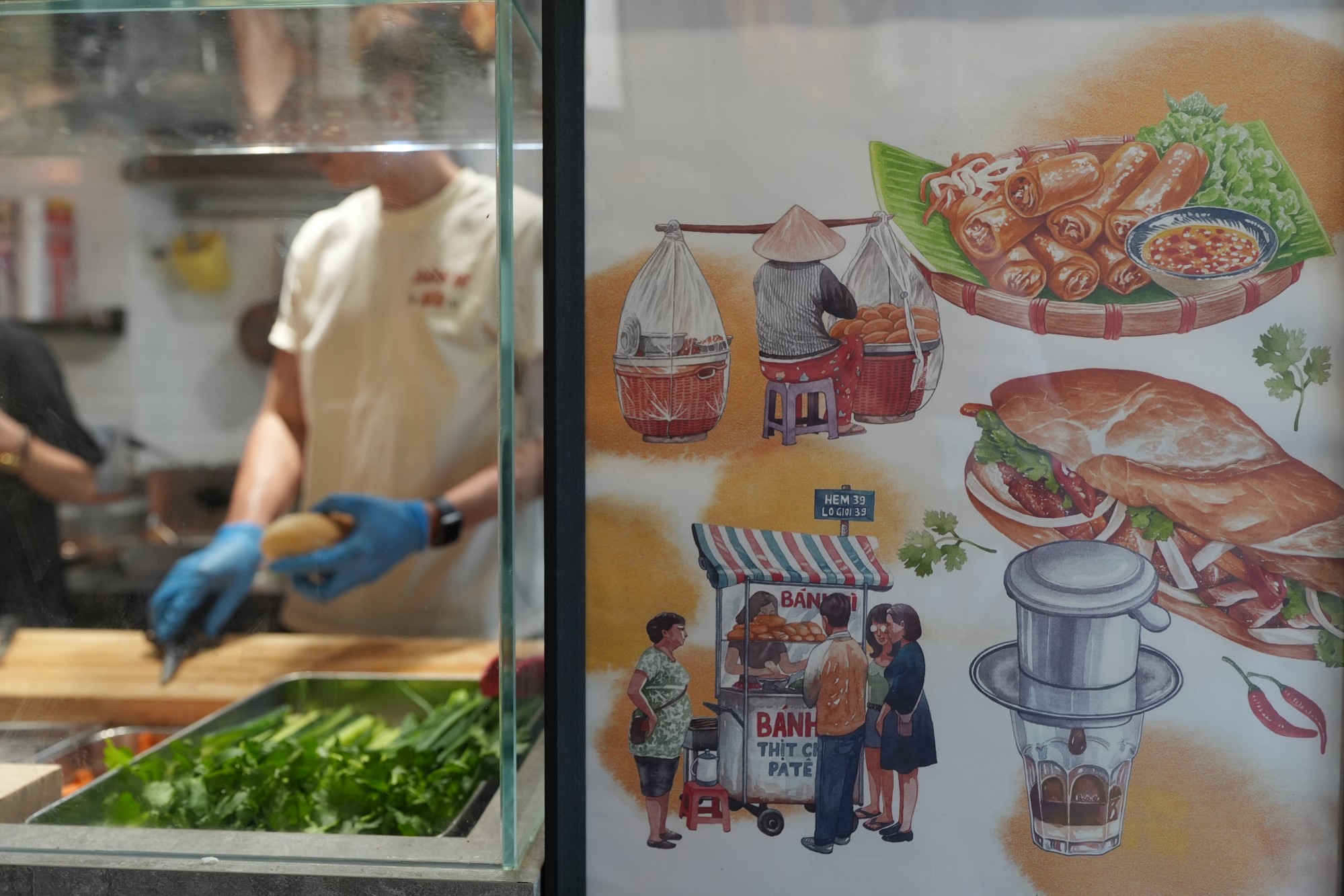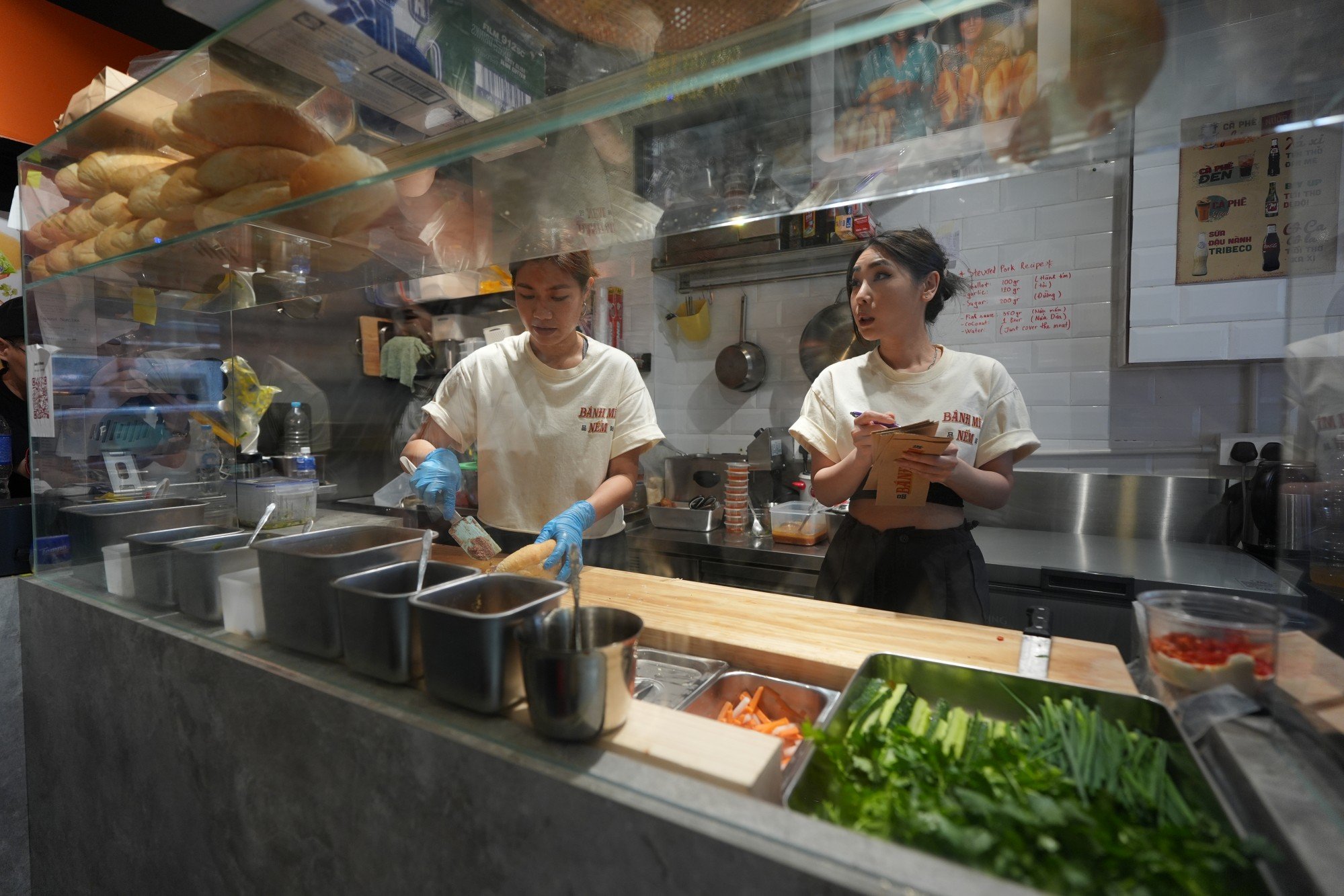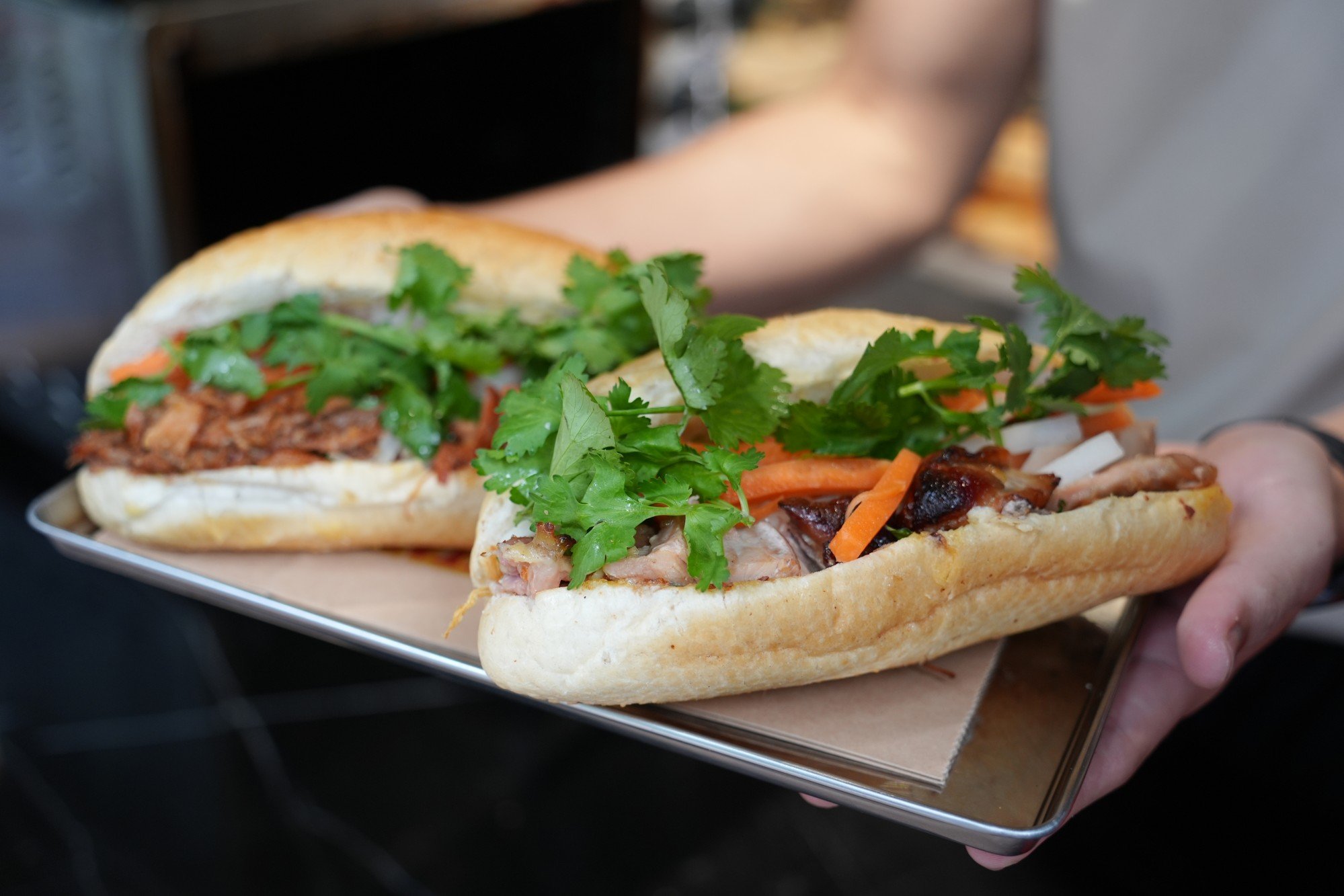Four years ago, during the pandemic, she launched her YouTube channel documenting her life in Hong Kong, travels in Vietnam and the various dishes she eats along the way.

“I know there’s a lot of Vietnamese food already but it’s not like what my mum made or the stuff I ate in Saigon,” says Phung. “Most of the Vietnamese cuisine here is from the north. It’s food from Haiphong, not even Hanoi.”
Banh mi originated in the more French-influenced culture of south Vietnam. Southern cuisine uses more sugar, spices and chillies, because of the warmer weather in the south.
In contrast, the food in the north, with its four seasons, is generally considered more subtle and savoury, relying on black pepper for seasoning.
You could argue that the food in northern Vietnam is more sophisticated while southern meals are simpler but pack a greater punch.

Phung launched Banh Mi Nem with fellow Saigonese Hanh Dang, a chef and founder of Pachi Pachi in Ho Chi Minh City. They serve five varieties of banh mi packed with pate, meat, meat floss, crunchy pickles and green herbs.
“From the first time we met [two years ago] we discovered a strong connection,” recalls Phung. “We’re both from Saigon. We have the same taste.
“Originally, Hanh wanted to open a vegetarian restaurant. But I said we should showcase our Vietnamese cuisine. This is our baby. It’s all Hanh and myself.
“That’s why we end up fighting a lot because we want to do it well with our heart and passion. Hanh has so much experience in the kitchen.”

To meet their exacting specifications, Phung and Dang produce their cold cuts, floss and liver paté in Vietnam and import them. It helps that Dang’s family is still involved in the food industry in Vietnam, serving as their proxy in securing staff to prep the custom ingredients required for Banh Mi Nem.
“Kiki and I want to bring the best Saigon food to Hong Kong,” says Dang. “Most Vietnamese restaurants adapt too much to the Cantonese taste. The flavours are not strong or heavy enough.
“For me, the food in Hanoi is a bit light. It’s not sweet enough but it’s also a bit salty. The food in the south is the most balanced.”
The pair even had their shop sign made in Ho Chi Minh City, because they couldn’t find anyone in Hong Kong to accurately produce Vietnamese letters.

As for the bread, they have their own original recipe after extensive experimenting and testing. For the freshest results, Phung and Dang made a commitment to produce it on their own daily. Because they bake it themselves, the capacity is still just 100 rolls per day.
“The buns are very different in terms of recipe and ingredients than French baguettes,” says Phung. “The ingredients we want are not easy to find here, so we import those. Also, the temperature is different. It’s hotter in Saigon so it ferments better and the bread gets fluffier. Hong Kong is more wet.
“We tried using the same method and ingredients, but the result didn’t match what we made in Saigon. So we tweaked the recipe slightly to make it fluffy, chewy and crunchy.”
Another speciality is their Vietnamese coffee, which Dang notes is prepared using the authentic Saigon method. The technique requires the coffee to be brewed the day before, then iced and served black. This process yields an intense flavour profile that’s almost chocolatey in its bitterness.

“I had an auntie who made banh mi and she also taught me some tricks to make the coffee,” explains Dang. “Most Vietnamese coffee here is not strong enough and they add too much milk. It’s too light.”
“Most places just don’t use enough herbs,” says Phung. “But I don’t think it’s because they can’t find them. Even when restaurants offer mint and Asian basil, a lot of people only use a little bit to dip it, then take it out. They won’t actually eat it. In Vietnam, the herbs are the main point of the pho.
“When Hanh and I go for Vietnamese food, we always want to add more herbs. If there’s no fresh herbs then we can’t accept it. On [their] own, I know some of the greens are a bit strong and bitter, or spicy, but in a banh mi with chicken or meat, it’s balanced.”
Dang says, “I’ve had picky people come and say they don’t eat salads. But then I hide the greens inside the banh mi. After eating, they thought the taste was good. They didn’t know the herbs were still inside.”

